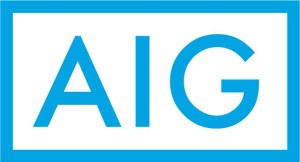 American International Group reported a difficult 2017 second quarter, with net income plunging over the previous year, and a commercial insurance combined ratio that came close to 103. The struggling insurance giant reported improvements in its personal insurance division, however, and sizable expense savings.
American International Group reported a difficult 2017 second quarter, with net income plunging over the previous year, and a commercial insurance combined ratio that came close to 103. The struggling insurance giant reported improvements in its personal insurance division, however, and sizable expense savings.
AIG’s stock was flat in midday trading on the NYSE, hovering around $65.57, down about 0.50 percent.
Brian Duperreault, AIG’s new president and CEO, noted in prepared remarks that “market conditions remain challenging,” but said the insurer has a number of opportunities to grow profitably. He added AIG execs stay “committed to disciplined underwriting and are focused on investing in profitable growth.”
AIG’s Q2 net income hit $1.1 billion, or $1.19 per diluted share, versus nearly $2 billion, or $1.68 per diluted share, in the Q2 2016 second quarter. After tax operating income was $1.4 billion, or $1.53 per diluted share, versus $1.3 billion, or $1.15 per diluted share in the same, year-ago period.
The highlights:
- Commercial insurance net premiums written landed at more than $3.8 billion, 15 percent lower than the nearly $4.5 billion in net premiums written in the 2016 second quarter. The combined ratio came in at 102.7, compared to 98.3 over the same period last year. AIG said the premium decrease came in part from better underwriting discipline. There was also “continued execution on our strategic portfolio actions [selling off assets] through the second quarter of 2017 and challenging market conditions,” AIG said.
- Personal insurance net premiums written produced $2.8 billion in net premiums written, down 3 percent from more than $2.909 billion in the 2016 second quarter. The combined ratio was 91.1, compared to 97 in the 2016 second quarter. AIG said the division “delivered strong results” due to favorable loss experience and lower catastrophe losses, plus an improved expense ratio reflecting AIG’s ongoing strategy to pare down risky underwriting and sell off assets. Net income from alternative investments also helped, though that was offset partially by a lower earned premium base and lower net favorable prior year loss reserve development.
- General operating and other expenses dropped 15.6 percent, or $404 million, to $2.2 billion in the second quarter. AIG said that better use of technology and “organizational simplification” helped.
Source: AIG





















 Breaking: Andersen to Replace Zaffino as CEO of AIG on June 1
Breaking: Andersen to Replace Zaffino as CEO of AIG on June 1  Surge of Supercharged Hurricanes Prompt Call for Cat 6 Classification
Surge of Supercharged Hurricanes Prompt Call for Cat 6 Classification  Executives on the Move at Liberty Mutual, Cowbell, W. R. Berkley
Executives on the Move at Liberty Mutual, Cowbell, W. R. Berkley  Nearly Half of 100 Largest P/C Insurers Destroy Value: ACORD
Nearly Half of 100 Largest P/C Insurers Destroy Value: ACORD 






